While researching my Umrah trip, I was told I didn’t need to book a long stay in Mecca because “Umrah can be performed in about 2 hours.” That’s a fairly accurate time estimate. But at the end of our 4-night stay, I did wish we could have stayed longer.
The only thing I can equate this experience to is going on a yoga retreat: A vacation of sorts, where you’re not spending your time figuring out where to go, what to do, what to wear, and generally wearing yourself out. You’re just there for one thing and everything else falls into place around that purpose.
Since most people reading my blog aren’t Muslim and likely won’t ever share in the Umrah experience, I wanted to bring it to life for you. Here’s a look inside Masjid Al-Haram in the holly city of Mecca:
Why Masjid Al-Haram is significant to Muslims
Masjid Al-Haram in Mecca is considered the holiest sight in Islam, attracting millions of Muslims annually for the Hajj and Umrah pilgrimages. Masjid Al-Haram houses the Kaaba, the Black Stone, Well of Zam Zam, the Hills of Safa and Marwa and the Station of Abraham.
Muslims believe the original Kaaba was built by by prophet Abraham and his son Ishmael (peace be upon them both). The Maqam Ibrahim (i.e. Station of Abraham) is believed to contain Abraham’s footprint, created while he built the Kaaba.
After he built the Kaaba, an angel presented Abraham with the Black Stone, which is believed to have fallen on earth alongside Adam and Eve.
Eventually, Mecca was populated by pagans who used the Kaaba for idol worship. When the prophet Muhammad (peace be upon him) conquered Mecca, he destroyed the idols and eventually a mosque was built around the Kaaba, which continues to expand to this day.
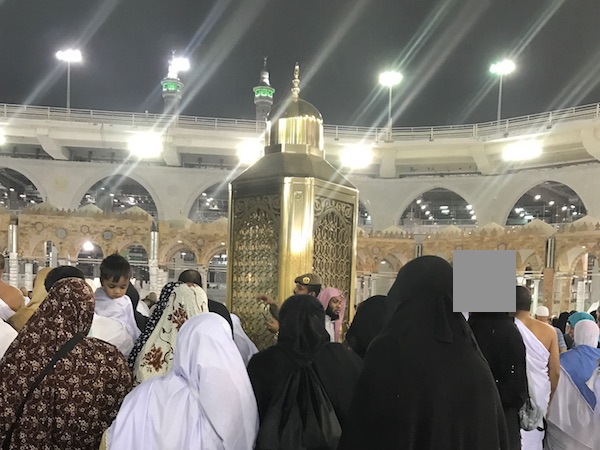
Who is allowed inside the Kaaba?
Permission to go inside the Kaaba is granted by the Al Shaiba family (also known as Bani Shaiba). They have held the keys to the Kaaba for over 15 centuries – predating the Muslim conquest of Mecca. In theory, they can grant permission for any Muslim to enter the Kaaba.
However, it would be impossible to accommodate them all and the lines would never end. So, access to the Kaaba is mostly restricted to Saudi rulers, dignitaries, and religious scholars during cleaning ceremonies.
The original shape of the Kaaba
An interesting fact I came across was that the Kaaba was originally rectangular. When the Quraish tribe rebuilt it, they vowed not to use funds obtained from vices like gambling and prostitution. A testament to their corruption, the tribe was only able to come up with enough non-dirty money to rebuild the Kaaba as a cube.
Today there is a semi-circular wall at one end of the Kaaba, signifying the length of the original structure. A lot of people go inside to pray after completing tawaf, as it is said that being within its parameters is akin to being inside the Kaaba itself.
Why non-Muslims can’t enter Masjid Al-Haram
I’ve gotten some comments about why non-Muslims can’t enter Mecca, and comparing that to the recent Muslim immigration ban. At the risk of sounding like a deranged Press Secretary, this isn’t a matter of discrimination. Mecca is a city where millions of Muslims come year-round to worship. It can get intensely crowded, to the point where people actually get trampled.
Even outside of the Hajj season, it can be difficult for pilgrims to perform the rituals of Umrah due to the large crowds that grow every year. Allowing tourists to add to the flock would make it worse.
So, while I’m sure it’s disappointing for those who want to see it for themselves, it’s best that Mecca stays closed to travelers except for those fulfilling their religious obligations.
Inside Masjid Al-Haram
We entered Masjid Al-Haram through the King Fahad Gate, and right away, I found myself inside a massive prayer hall. Everyone has to take their shoes off before entering, which is why it’s so important to bring a drawstring bag to carry them in. The prayer hall is huge and features high ceilings adorned with intricate carvings.
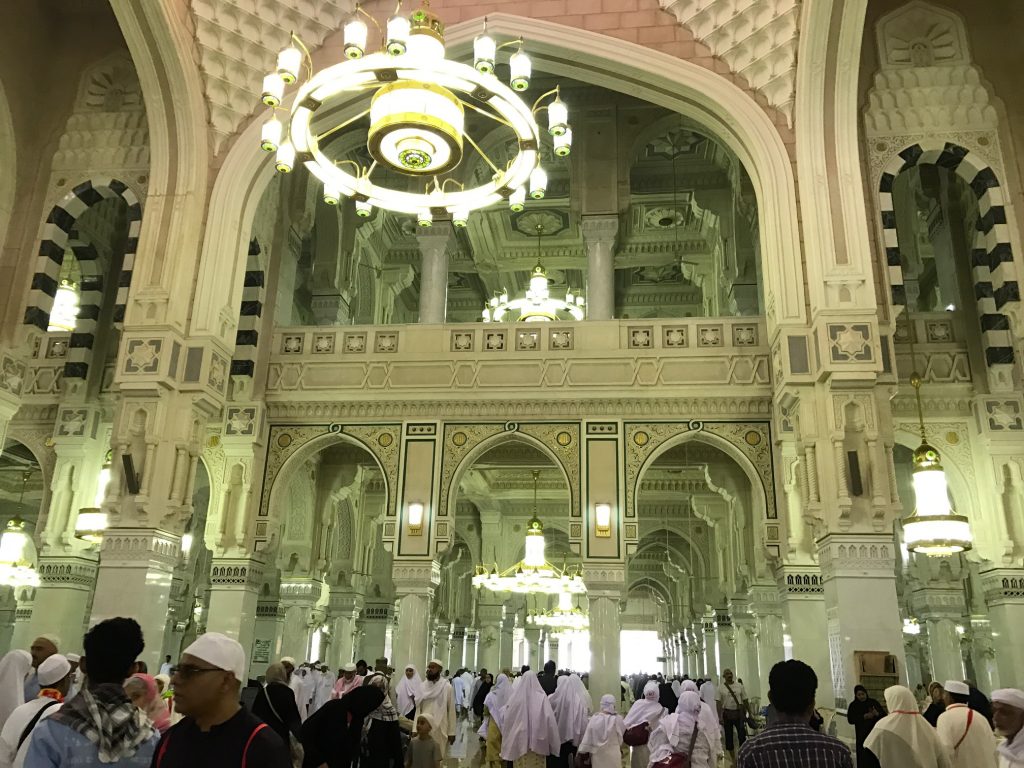
There are also shelves throughout the space containing copies of the Quran that anyone can use. Large containers of Zamzam water are lined up against the walkway and replenished throughout the day.
After quite a long walk, I entered a massive terrace where I caught my first glimpse of the Kaaba – a spectacular and surreal sight. Stairs lead down to the lower level, where the Kaaba was located and the tawaf is performed.
I had to stop for a moment because I was in complete awe at this sight. The Kaaba isn’t a grand structure by any means, but it felt significant. Here I was, in this historically and religiously significant place that I’d seen and heard about countless times throughout my life. My grandfather and great-grandfather all made this journey before me and here it was in front of me.

Umrah rituals inside Masjid Al-Haram
If you’re going on your own Umrah trip, you might find this one-page guide helpful. Basically, the rituals of Umrah consist of the following:
- Entering the state of Ihram
- Performing tawaf (circling the Kaaba seven times)
- Walking seven times between mount Safa and Marwah
- Shaving/trimming one’s hair once all rituals have been completed
- Praying
While men’s Ihram consists of white garb fashioned out of two simple pieces of unstitched fabric, women can wear whatever they want during Umrah. Of course, they must cover everything except for their hands and faces. I found it odd that despite this requirement, the female security guards, as well as some local women, wore the full niqab and gloves inside the mosque.
The dress code did make packing extremely easy. I brought a few pairs of leggings, t-shirts, and maxi dresses that I wore underneath a black abaya. These outfits were comfortable, kept me cool, and were appropriate for the non-religious part of our trip.
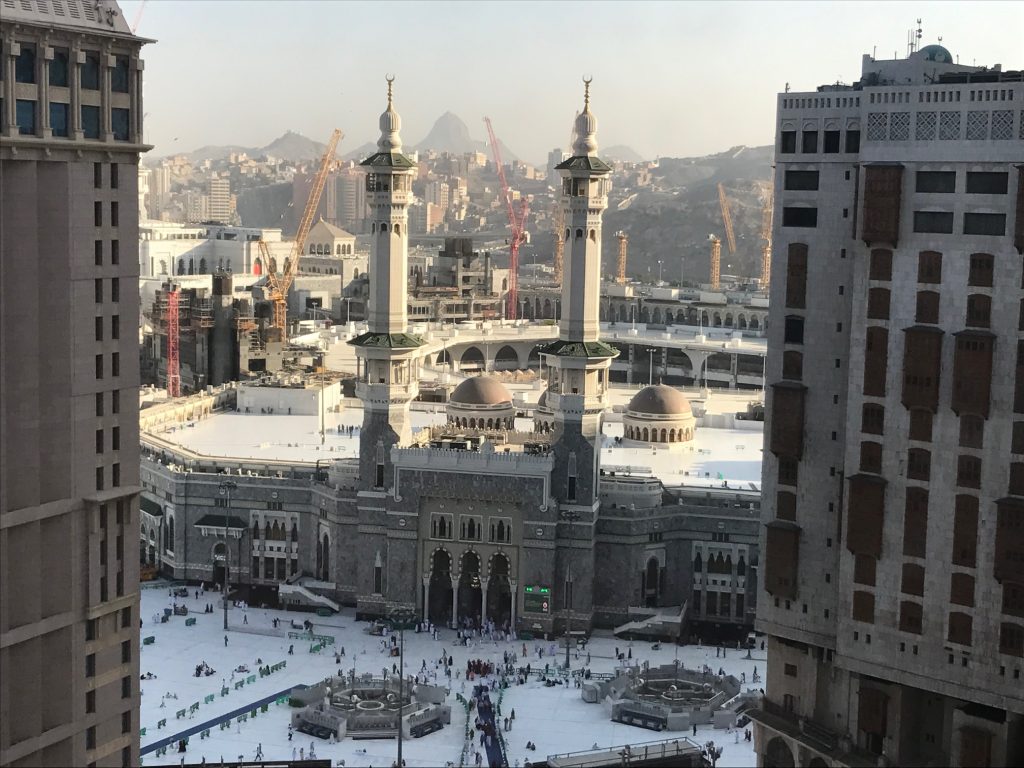
Circumventing the Kaaba (i.e. Tawaf)
Everything inside Masjid Al-Haram centers around the Kaaba. The original structure was believed to have been built by Abraham and renovated many times since. In fact, there is a glass enclosure near the Kaaba said to contain Abraham’s footprints, formed while he was building the original structure.
There are numerous rituals during Umrah and Hajj, but the tawaf around the Kaaba is perhaps the most well-recognized. During Hajj and Umrah, Muslims circumvent the Kaaba seven times.
This is best done at night. The heat from the crowd can be overwhelming enough, but throw in 85-degree weather and the glaring sun, and it can get downright unbearable.
A few steps into my second attempt at tawaf, I felt someone’s hands on my shoulders. I turned around and it was an elderly Turkish woman, who was by herself and seemed to be struggling. I took her arm and walked her around the Kaaba for three or four rounds before she found her companion and we parted ways.
If there’s one piece of advice I would give to anyone traveling with someone else, it’s to wear recognizable clothing. It’s easy to get separated from your group, which doesn’t fare well for children or the elderly. Whenever I lost sight of my group (which happened quite a lot), I kept an eye out for my cousin’s green headscarf, which stood out in the crowd of mostly black and white clothing.

Another aspect I was surprised by was the diversity of the crowd. Sure, I knew Mecca attracted Muslims from all over the world, but seeing it was something else. Middle Eastern Muslims walked alongside Asians, Africans, and Eastern Europeans. Moreover, the variety in age was interesting.
I saw a man walking around the Kaaba with an infant who couldn’t have been more than a month old, elderly couples who stopped and leaned on each other for support, children who walked excitedly alongside their parents, and a young man with no legs who was carried towards the Kaaba by two other men who seemed to have no relation to him whatsoever. It was a beautiful and humbling thing to witness.
Touching the black stone outside the Kaaba
The Black Stone is a noteworthy part of the Kaaba, believed to have fallen on earth alongside Adam and Eve. It’s virtually impossible to touch, as massive crowds of people refuse to leave once they reach it. I was very determined and only got within about four feet of it before claustrophobia got the best of me.
As part of the tawaf rituals, pilgrims are instructed to touch the Black Stone or simply point to it. I decided it was better not to touch it at all than to shove and possibly hurt people in an effort to get to it.
I did get very lucky on my first day while walking with my cousin. While approaching the Yemeni Corner, a path just opened up and we were able to walk right up to it without any obstacles. Touching the actual Kaaba was also not as difficult as I had imagined – especially on that first day.
Running between the hills of Safa and Marwa
The area between Safa and Marwa is enclosed within Masjid Al-Haram and kept cool. After completing the Tawaf, pilgrims walk a total of seven times between these hills and recite prayers at each end.
The significance of this activity is related to the story of Abraham and his wife, Hagar. Abraham was commanded to leave Hagar and his newborn son, Ishmael, in the desert. After running out of food and water, Hagar ran back and forth between these two hills, using them as lookout points to find water and keep sight of her infant son.
Eventually, she returned to find a well had sprung up next to Ishmael. Today, this well is known as the Well of Zam Zam.
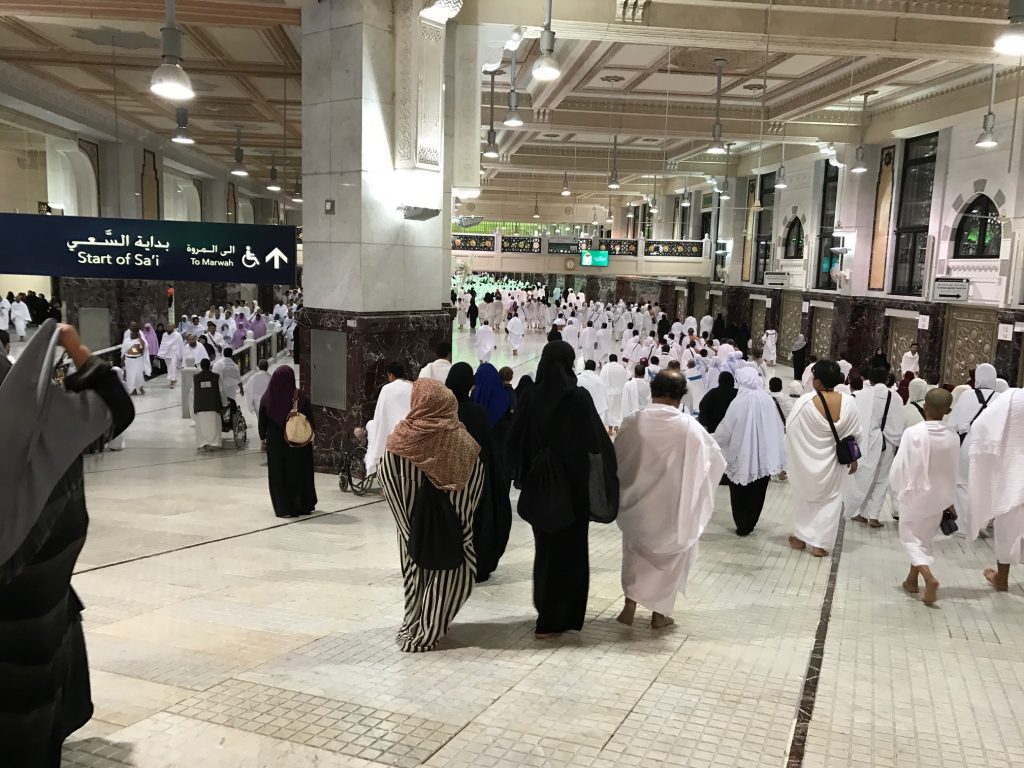
Men have to run between Safa and Marwa when they get to an area marked with green lights. A lot of people wonder why only men have to run. I imagine it’s to make things just a bit more difficult for them, so they can really empathize with a woman who had to run that distance in the heat. Women, on the other hand, can empathize all too well.

The importance of being in shape before Umrah
While Umrah rituals aren’t as rigorous as those of Hajj, it’s good to be in shape beforehand. I tried my best to get back into my 10,000-step walking routine ahead of this trip. I should have done that at least two weeks in advance because the walk between Safa and Marwa ended up being too much on that first day.
Factoring in my jet lag and general state of exhaustion, I had to sit down halfway through tawaf on my first day and fell asleep against a column in the middle of the hall.
When I woke up, I realized I needed to get some rest. The next day, it was much easier…even though I forgot my socks and had to do it barefoot.
Completing Umrah
Upon completing Umrah, pilgrims must trim at least a fingertip’s worth of hair. Men are advised to shave their heads, if possible.
I finished Umrah in the middle of the night and had no idea where to go for a haircut. So I just did it myself in the hotel bathroom. I didn’t butcher it too badly, considering I used a pair of eyebrow scissors.
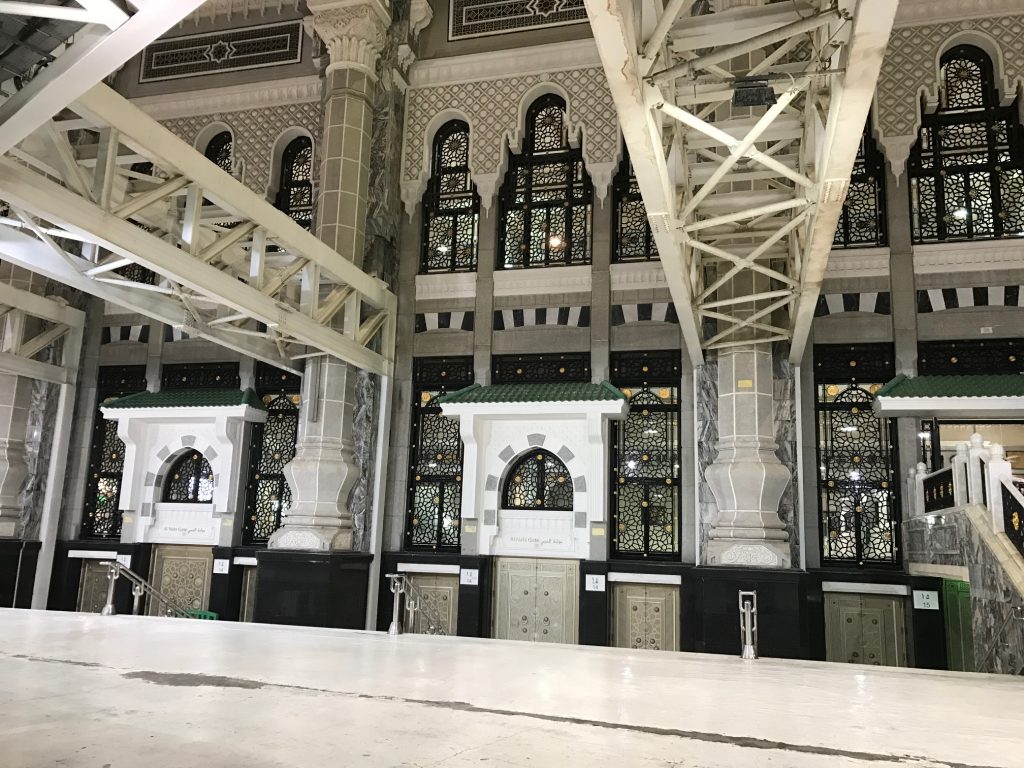
Final thoughts on Umrah
Before we left for Umrah, my dad’s cousin explained to us what a privilege it was to be able to go on this journey, which nearly every elder in our family had undertaken before us. He explained that we don’t just “decide to go” on Umrah – we’re summoned by God.
How we were lucky to do this in our youth, with modern conveniences like air travel, hotels, and air conditioning. Generations before us embarked on the same journey in much more challenging circumstances: Traveling for days on horseback, enduring excessive heat and enjoying far fewer comforts than we were.
It’s easy to take these things for granted. As I wandered around the premise of Masjid Al-Haram, this point really hit home.
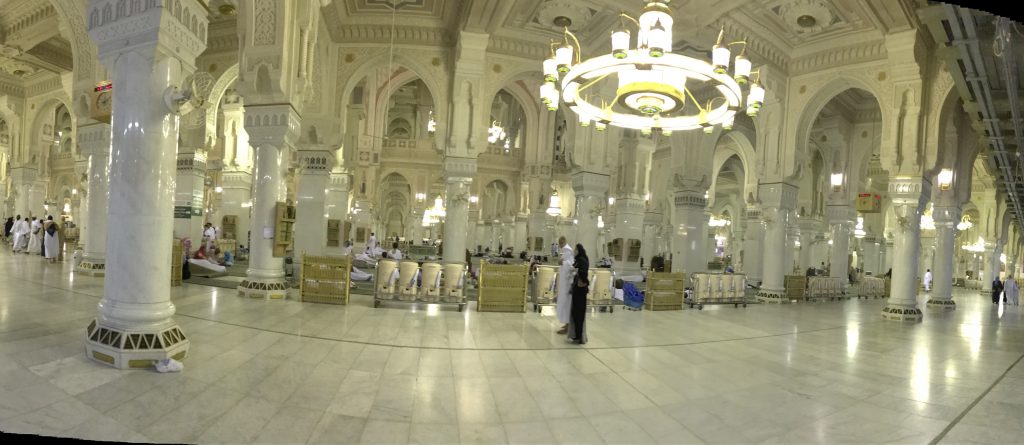
Over the course of my Umrah experience, I noticed people who didn’t have money to stay in hotels and instead slept at the mosque. They stored their belongings in lockers and rolled out their cots at night. These people used public bathrooms to wash up and, in the morning, they would cluster around small plastic bags filled with hardboiled eggs and bread.
Meanwhile, we slept in suites at the luxurious Conrad Makkah, just steps from Masjid Al-Haram. We had an abundance of food and every imaginable amenity available. We made the long journey in business class (paying just a fraction of the cost) and enjoyed luxuries few others could afford. Up until that point, I had taken my Umrah experience for granted.
Most middle-class Americans don’t think of themselves as privileged. I certainly would not have used that word to describe myself before. But in that instance – watching a multigenerational family on the same journey as us, sitting on a cot outside in the heat, eating their hard-boiled eggs and bread for breakfast – I realized I was privileged.
I’m grateful I had the opportunity to perform Umrah with my family. It’s something I’ll always cherish and I hope anyone who wishes to, gets a chance to experience it for themselves.
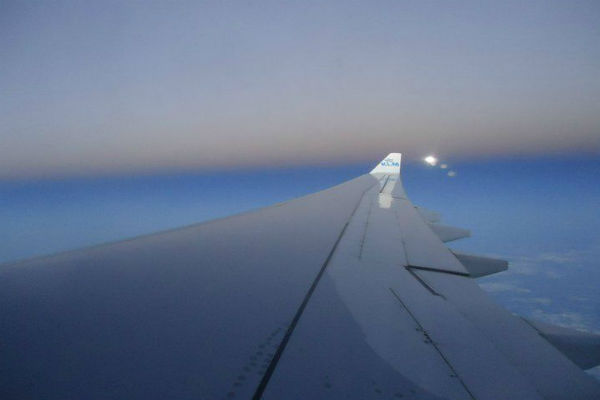

Wonderful story, well told and very informative. Thanks for sharing
Glad you think so!
Thank you for sharing this personal journey
Sure thing! Thank you for taking the time to read it.
Thank you for posting such an unusual story (particularly for a travel/points blog). I really enjoyed reading about a culture that I knew so little about. Even with acquaintances of Muslim faith they don’t talk about their religious experiences.
Thank you, Gail. I’m glad you enjoyed it.
Ariana, thanks for a great read – I really enjoyed it !
Amazing to know that women are no longer being harassed or refused while entering Saudi !
Many moons ago I used to live as a white, married, christian woman for some years in a remote, isolated area of Saudi. I had to marry my husband at the time in order to receive a visa to enter and live in the country as his dependent. No single women were allowed entry, only in very few exceptions.
At that time it was forbidden to enter the country legally with anything considered “western-values”, let alone pictures of forbidden targets like i.e. ads or articles in magazines about western women and their attire. Among many other things, those would be the first items confiscated from your luggage after the most diligent inspection when entering through customs.
Our home airport was Dhahran and from there it was a two hour flight by private aircraft to our location.
Our western compound was situated on one of the through-routes to Mecca and I would watch the constant stream of male pilgrims passing by, by car, on foot, and even on camel or donkey – totally fascinated – noticing at the same time the total absence of women.
It was very common in that time to see the Saudis transport their women in the back of their pick-up trucks, together with their goats.
We as foreigners were not allowed to travel even in the direction of Mecca (6 hrs away by car) and were constantly watched by the religious police.
There always had to be detailed, alternative escape plans in place – just in case one had to leave the country urgently for whatever reason
Thus, just before my husband’s assignment was about to end, we had to leave the country immediately after it had become known through various channels that the religious police had become aware that we had visited Israel – entering from Europe with different passports on a separate occasion some weeks before.
I have not been back ever since, although I understand by reading your report that the country
might have relaxed it’s laws towards visitors and women in particular.
Perhaps I should give it a try again, visit my old stomping grounds and admire the seemingly positive changes the country has gone through !
What on earth are you talking about? This reads like garbled horseshit.
Hello Alice,
The only thing that I can say is ‘good luck’. I would like to go back to Saudi Arabia myself but unless things have changed recently there are no tourist visas; it is a closed country unless you are on a religious pilgrimage. Btw, I lived outside of Jeddah.
Kelli
They are offering tourist visas. Not that I see the appeal in visiting Saudi Arabia outside of a religious pilgrimage – there are more interesting Arab countries to visit outside of the Gulf, IMO.
like where?
This is an interesting comment because when I did my research on the Sheikh Zayed Grand Mosque in Abu Dhabi (which by the way was among the most beautiful things I’ve seen), I came across several people claiming that it was just okay and not comparable to the impressiveness of mosques all over Saudi Arabia. Obviously people have different preferences, but at least some value SA very highly for its potential tourism.
I thought the Sheikh Zayed Mosque was fine – it photographs very well at night but in person, it’s just so-so. White, with floral painting everywhere. Then there’s a room where tourists can go to look at chandeliers. I didn’t think it was the most impressive mosque I’ve ever been to, and I certainly think they could take the opportunity to educate tourists about a faith that’s been hijacked by the far-right. Instead, they bring them into a room to look at chandeliers.
Haha but I loved those chandeliers…
I definitely agree that there could be more education about the religion itself, but where I disagree is that I see tremendous value for an objectively awesome looking house of worship to open its doors for the public to visit and reap however much/little they please. People who have any desire to learn about Islam tend to have an open mind to begin with, and are likely to learn it one way or another. Having a mosque as a world famous tourist attraction brings in everybody else to get a glimpse at the culture. I sincerely hope that some of those “all Muslims are terrorists” people stumble upon (one of those places like) this mosque and realize, hey people who build such beautiful things can’t possibly be bad.
Sort of like how Notre Dame wouldn’t be preaching Jesus as savior to its visitors.
It’s not so much about preaching, but educating. When I go to an old church like Notre Dame, I’m curious about who built it, why, when, and how. I want to know the significance of certain architectural details and how they’re relevant to that specific faith. If I was completely clueless about Christianity, I’d want to know where/how sermons are delivered, how often, who the religious authority of this place is and how they’re chosen. I just think its kind of a lost opportunity for them to focus so much on a superficial aspect. But I do see merit to the idea of “people who built such beautiful things can’t be all bad.”
Calling somebody you disagree with (the Press Secretary) “deranged” is not good. You can do better.
It’s called humor. It makes the world a happier place.
Regarding the “why Muslim can’t enter Mecca”, I consider it a bummer but believe that the owners of each place has the right to decide who is/isn’t welcome. If Mecca never welcomed non-Muslims and if North Korea does not welcome western foreigners, so be it.
Comparing the (now repeatedly deemed illegal) travel ban to Saudi Arabia is apples and oranges. The US is founded as a immigrants’ country with explicit separation of church and state. Those of us who came to this country 3 years ago or 3 generations ago have built our American dream on this principle. The anger / backlash against the administration for this ban wasn’t a dispute about our country’s sovereignty over its borders, but about a fundamental betrayal of the American spirit.
Anyhow. I’d still wish to check out Mecca, but whatever. I don’t entirely buy the security / overcrowding explanation (since the restriction has been in place for a long time) but it’s part of the reason I find Mecca so intriguing… can’t think of another place on earth being so popular.
My point is Mecca’s purpose is to be a place for prayer pretty much 24/7. It’s not supposed to be a tourist attraction. If I wasn’t there for the religious experience, I probably would not have understood the appeal of it myself. Since the government has destroyed most historically significant sites, there’s not a whole lot to see and do. I agree, the ban vs. entry to mecca is comparing apples and oranges.
Plenty of people visit and appreciate Capitol and White House without necessarily understand or care about US politics, though. I believe the power of curiosity is strong when it comes to anything of significance.
I do wonder about the size issue. Mecca’s current accommodation limit (which is already impressive) is insufficient not only for curious tourists, but also for the actual pilgrims. Assuming the 1.6 billion Muslims each go on Hajj exactly once during a 50-year healthy adult lifespan, each Hajj season would see 32 million visitors, 10-15x the recent stats! I realize that many people will never be physically or financially capable of performing the ritual, but as travel becomes more affordable and the world population continues to rise, it’s not hard to imagine the demand for annual Hajj to double or triple in our lifetime. Then the laws of physics will dictate that the pilgrimage requirements prescribed 1,400 years ago are no longer possible. What happens then?
Anyways. Thanks for the write up. It’s always fascinating to read about these despite not being a believer. Also great to see some new pictures (I know photos are technically forbidden).
There’s historical significance to the Capitol while everything of historical significance in Mecca has been destroyed by the Saudi government (to prevent idolatry). Your perspective is interesting though – I’ve never done the math like you did. They’re constantly expanding the mosque, but at this rate I’m thinking it will eventually get 10 stories high and you can just forget about getting near the Kaaba. That said, Hajj isn’t obligatory if a person isn’t able to go, which may well happen since the Saudi government already restricts Umrah and Hajj visas. And if, in 1400 years, it gets to the point where most Muslims can’t go, then the non-Muslims can consider it karma for not being allowed in. 😉
Pingback: HOW I LEARNED TO READ THE QURAN: A TALE OF THREE COUNTRIES | Siraat-e-Mustaqeem
Good summary on Umrah prayers & Rituals…but there are more to it than just performing prayers & rituals…I’m one of the fortunate that have been performing Umrah too….and more than once……
Assalmualaikum,
Very beautiful experience,
Great article with very good and useful information on umrah, thank you so much for sharing such good info.
I have already started my search for best umrah 2020 packages UK and after my search the one I found best suitable from http://www.sarainternationaltravel.co.uk
I made out some notes from the article to follow it while performing my umrah, hope you don’t mind.
Please any suggestions from anyone reading this are welcomed.
Thank you,
Assalamulaikum
Assalam o Alikum!!!! Your story is awesome. Umrah is a holy journey to Mecca that can be performed at any time of the year. As a Muslim, I know that when we go to Makkah for Umrah, we are feeling as the guest of Allah Almighty. Moreover, Masjid al-Haram is the location where Muslims complete their Hajj and Umrah pilgrimages. Moreover, Masjid al-Haram encircles to the Kaaba, the most sacred site in Islam. Many Islamic historical landmarks are also components of the Grand Mosque of Mecca, including the Zamzam well, the tiny hills of Safa and Marwa, Maqam Ibrahim, and Hajar Aswad. When a Muslim accomplishes his Umrah pilgrimage inside the walls of Masjid al-HARAM, he has a great opportunity to strengthen his connection with Allah, the Prophet Muhammad (PBUH), and Islam.
Thank you, I’m glad you enjoyed my story.
Thank you for posting. You make some interesting points. Especially about being physically prepared beforehand. In the last Umrah I performed, I ended up taking nearly 24,000 steps that day.
That’s a lot of walking! It’s definitely easier when you’re used to it and wearing comfortable shoes.